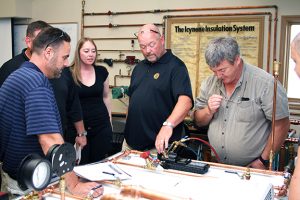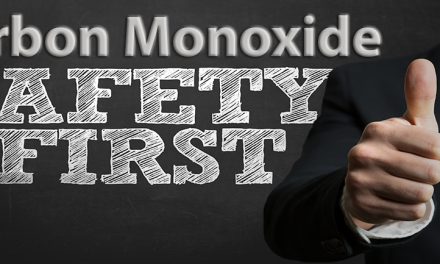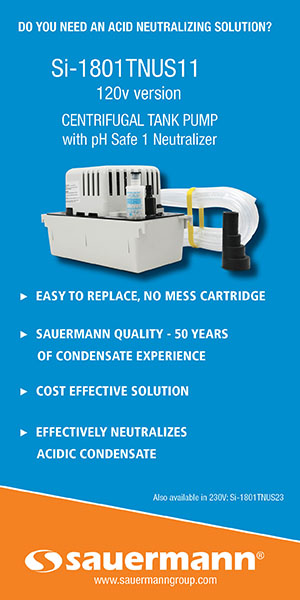Five Steps to Becoming A Performance-Based Contractor
In the third installment of this ongoing series we will explore the first five of 10 distinct steps to help you on your path to embracing High-Performance HVAC ‘ should you choose to accept this mission.
It’s important to understand that anyone can become Performance-Based ‘ it’s not an exclusive club designed to keep people out. As the saying goes, the ‘rising tide raises all ships.’ The more contractors doing this, the better it is for everyone, including your company, our industry, and most importantly, your customers!
Let’s take a look at each of the steps on the path to High-Performance Contracting?:
 Step 1 – Explore the Commitment and Keep an Open Mind
Step 1 – Explore the Commitment and Keep an Open Mind
The primary barrier to entering this realm of contracting is the level of your commitment. The more committed you are, the greater your chances of succeeding. Attending one class and learning a little bit about air diagnostics or balancing does not constitute the level of commitment necessary to succeed. It’s a start, but you must follow through. This means getting the right training, tools, and instruments for your entire team to ef’ciently and professionally move up to the next level.
The foundation of Performance-Based Contracting (PBC) is measurement. If you don’t measure, you’re just guessing. If you think you can learn some buzzwords and skip over the foundation of High-Performance HVAC ‘ which is testing ‘ you’ll waste precious time and money.
If this is your intent, this series may not be for you, at least at this time. You may want to download the articles, save them to a file, and go back to them once you are ready to take a serious look at this part of the HVAC contracting business. I hope you decide to read on and find that it’s a commitment worth making.
 PBC requires you to be open to the possibility there may be a better way. For example, many of us have done things the same way for many years. We live by the rule, ‘If it ain’t broke, don’t ‘x it,’ right? WRONG.
PBC requires you to be open to the possibility there may be a better way. For example, many of us have done things the same way for many years. We live by the rule, ‘If it ain’t broke, don’t ‘x it,’ right? WRONG.
There’s much truth to the saying, ‘if your mind is not growing, it’s probably shrinking.’ So, keep an open mind to the new ideas presented here, and to the possibility that some of the old ways were never right in the ‘rst place.
Many of us grew up in this industry with rules of thumb that have been passed on from tech to tech, father to son, to grandson. Remember the telephone game you played as a child, where you sat in a circle and whispered a phrase into the next person’s ear, and it would be repeated over and over until the last person spouted out words that didn’t even resemble the original sentence? We’ve been playing the telephone game in our industry for more than 50 years now. Perhaps some original rules of thumb were fairly close – others not. Until recently, we didn’t have an easy way to check.
Many of these rules, like ‘a six-inch duct can handle 100-120 CFM,’ don’t work today. Perhaps when that rule of thumb was created, it was based on short straight runs of sheet metal with nearly perfect transitions. Do those conditions resemble the kind of HVAC systems installed over the last 30 years? I think you know the answer to that one.
An important step is being open to the possibility that not only are your installations not perfect, they may be a lot more messed up than you think. As we interviewed Performance-Based Contractors across the country, we found this was one of the toughest things to come to grips with.
‘We thought we did high quality work,’ a Kentucky High Performance contractor confessed. ‘Our family business goes back 30+ years, and we always felt our systems worked. The ‘rst time we measured the performance of one of our systems, our jaws dropped. That was one of the toughest moments in our company’s history,’ he recalls.
Remember: If You Don’t Measure, You’re Just Guessing!
 Step 2 – Decide If You Need to Change
Step 2 – Decide If You Need to Change
The only person who knows whether High Performance is right for you is you!
Examine your current business ‘ are you happy with how it’s going? Are you moving forward, or are you in a rut? Are you making money, or are you just keeping up with the bills hoping that someday things will be different?
Be honest with yourself. Whether you’re a two-man shop, or a $5-million business, are you making enough money to ‘nance the company’s growth and put money in the bank for your future? If your net, pretax pro’t is less than 10%, there’s room for improvement. If it’s less than 5%, you’re basically in a holding pattern. If it’s less than 2% (the industry average ‘ yuck), you’re de’nitely going in the wrong direction.
So how do you pull out of the current rut? Decide today to be a different kind of contractor. There are lots of opportunities to grow in different directions. You could start doing duct cleaning, launch a solar division, or dive into home performance and insulation. But will that really change the complexion of your business? Unless you can get the pro’ts you need and deserve for your whole business, these other things can often be huge distractions, draining your energy and resources.
There’s nothing wrong with organically growing your business with add-on services if your main business is strong and pro’table. Unfortunately, these add-on services often mask real problems and hide the bleeding in your business.
PBC is not an add-on business. Although you could add on new services, like independent third-party testing and balancing, the premise of Performance-Based Contracting is to change how you’re doing the things you already do. It is a way to transform your core business both technically and pro’tably.
Step 3 – Start Your Education
If you’re still reading this, you’ve made a decision to examine PBC a little closer ‘ congratulations! Get started right away by becoming more educated on the air side of HVAC. If you’re reading this, chances are you already have a good understanding of the equipment and refrigerant side. If not, seek good training in these areas as well.
True performance includes all aspects of the HVAC system and its interactions with the building. Proper design, sizing, installation, air’ow, and combustion adjustment, refrigerant charging and so forth are all critical factors in system performance. This series is not meant to cover what goes on inside the equipment (with the exception of combustion testing), although equipment selection and sizing are critical.
Recommended Training
 Start with a simple class that provides the basics of airflow and static pressure testing. This provides the necessary foundation for better understanding duct system diagnostics and necessary improvements. NCI (National Comfort Institute), provides a class titled, Duct System Optimization that can help. It takes you from the very basics through advanced static pressure and airflow diagnostics, to how to improve and optimize duct system performance.
Start with a simple class that provides the basics of airflow and static pressure testing. This provides the necessary foundation for better understanding duct system diagnostics and necessary improvements. NCI (National Comfort Institute), provides a class titled, Duct System Optimization that can help. It takes you from the very basics through advanced static pressure and airflow diagnostics, to how to improve and optimize duct system performance.
NCI keeps the concepts simple and backs them up with easy -to-follow forms, reports, and procedures. While some colleges offer air balancing courses, you’ll ‘nd they are typically directed at engineers and provide little guidance in terms of ‘eld diagnostics, system renovation, and residential balancing. NCI’s class teaches the basic principles of PBC and weaves in the business, sales, and marketing approaches into the training.
Another key component of PBC is the combustion side of heating equipment. This is yet another area riddled with myths, legends, and rules-of-thumb. Some of these false assumptions have become part of our building codes, especially combustion air and venting rules. There are three key issues when it comes to combustion appliances ‘ safety, comfort, and energy use. High-Performance HVAC addresses all three.
Over two decades ago NCI recognized the need for reality-based carbon monoxide safety and combustion training. Today the organization is the world’s largest combustion efficiency and safety training and certi’cation body with well over 15,000 certi’ed CO/Combustion Analysts.
NCI’s Jim Davis, one of the top authorities on carbon monoxide and combustion, wrote a National CO & Combustion Diagnostics protocol which remains the most comprehensive step-by-step protocol available today. This certi’cation class was designed with High Performance in mind so it includes much more than just the technical education.
 Step 4 – Get the Right Tools
Step 4 – Get the Right Tools
You must have the right tools to help diagnose performance issues and then test-out the system once you’ve installed and/or ‘xed it. This is not the place to cut corners. The right tools can make all the difference in your accuracy, speed, and professionalism in front of the customer. Every now and then a contractor asks us if he can make his own ‘ow hood out of cardboard or sheet metal. My advice is absolutely not!
This is critical. The right instruments do time consuming calculations that make thorough testing feasible. They also are the difference between being perceived as a professional and looking like some nutty experimenter. Besides, if you ever had to defend your home-made instruments to an engineer, homeowner, or even a jury, what would you use for a calibration certi’cate ‘ one or two-ply ‘comfort’ paper?
Don’t give in to the temptation to cut corners when it comes to instruments. It’s better to invest in a few key high-quality instruments than throwing money at a bunch of cheap imitations that will likely end up collecting dust on a shelf somewhere because you don’t trust your readings.
In a future installment of this series we’ll look at each of the tools needed to get started, and what tools you’ll want to add as you grow into a full-‘edged Performance-Based Contractor.
Step 5 – Practice, Practice, Practice
 Any professional athlete, actor, or entertainer will tell you what makes them great is how much they practice before they hit the ‘eld or get in the spotlight. The same goes with Performance-Based diagnostics ‘ especially on a sales call.
Any professional athlete, actor, or entertainer will tell you what makes them great is how much they practice before they hit the ‘eld or get in the spotlight. The same goes with Performance-Based diagnostics ‘ especially on a sales call.
There’s nothing more embarrassing than showing up at a customer’s home with a shiny new instrument and fumbling around in front of them trying to ‘gure out how to turn it on, let alone use it properly. Talk about performance anxiety!
Start with your own home or shop. Once you’ve received the training and purchased the right tools, then measure your home’s HVAC system performance. Next test a family member’s system or better yet, one of your employees’ systems.
Don’t wait too long after any training to begin testing ‘ get out there and test within a week following your training. Borrow the tools if you must but start right away. The danger of putting this on a shelf for a month or two or six, is most people cannot retain information that long without putting it into practice.
Don’t waste your hard-earned money and more importantly your precious time, unless you’re willing to get out there and start testing.
In the next installment of The ABCs of High-Performance we’ll look at five additional steps needed to get your business on the High-Performance track.












Recent Comments